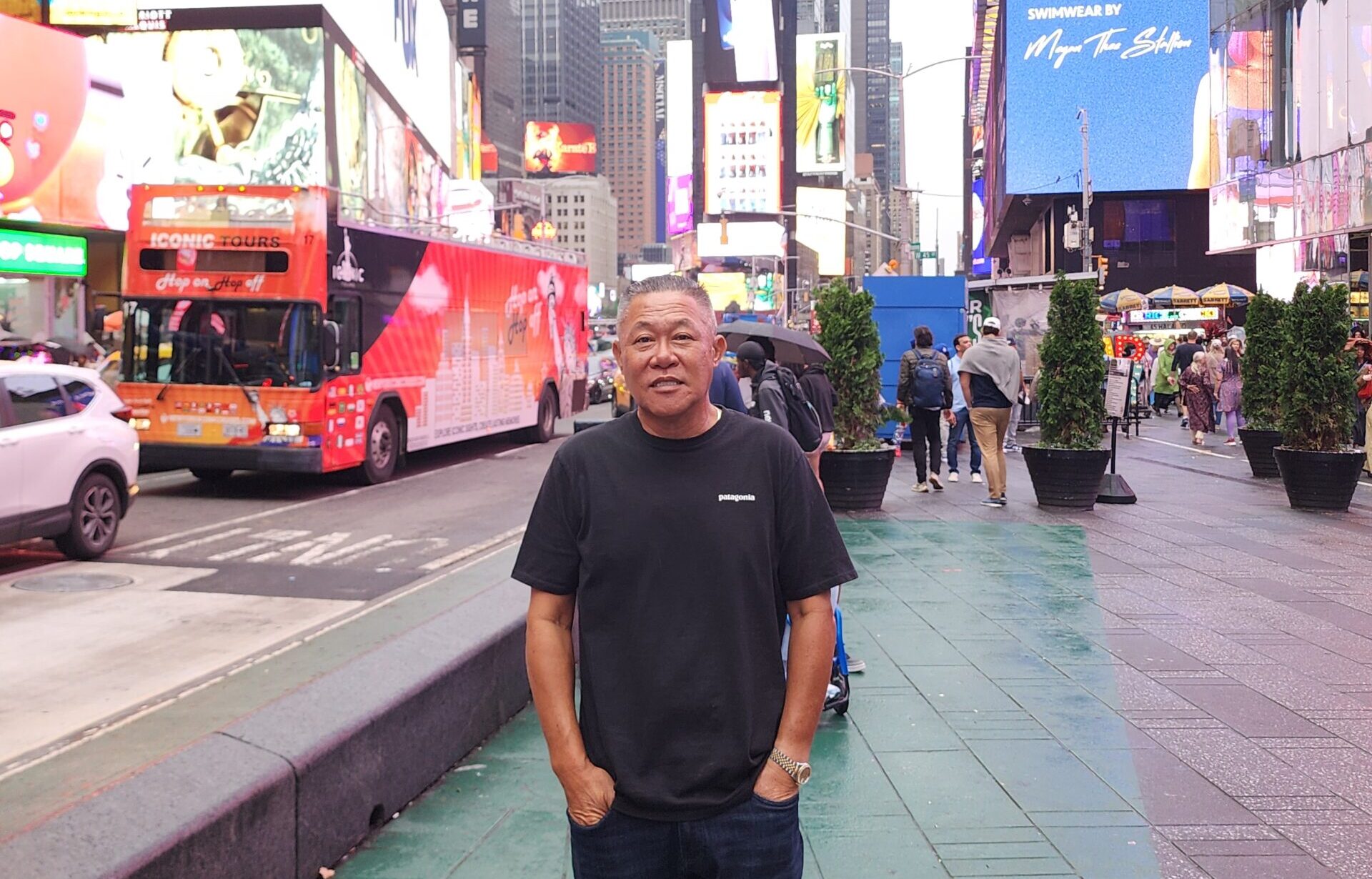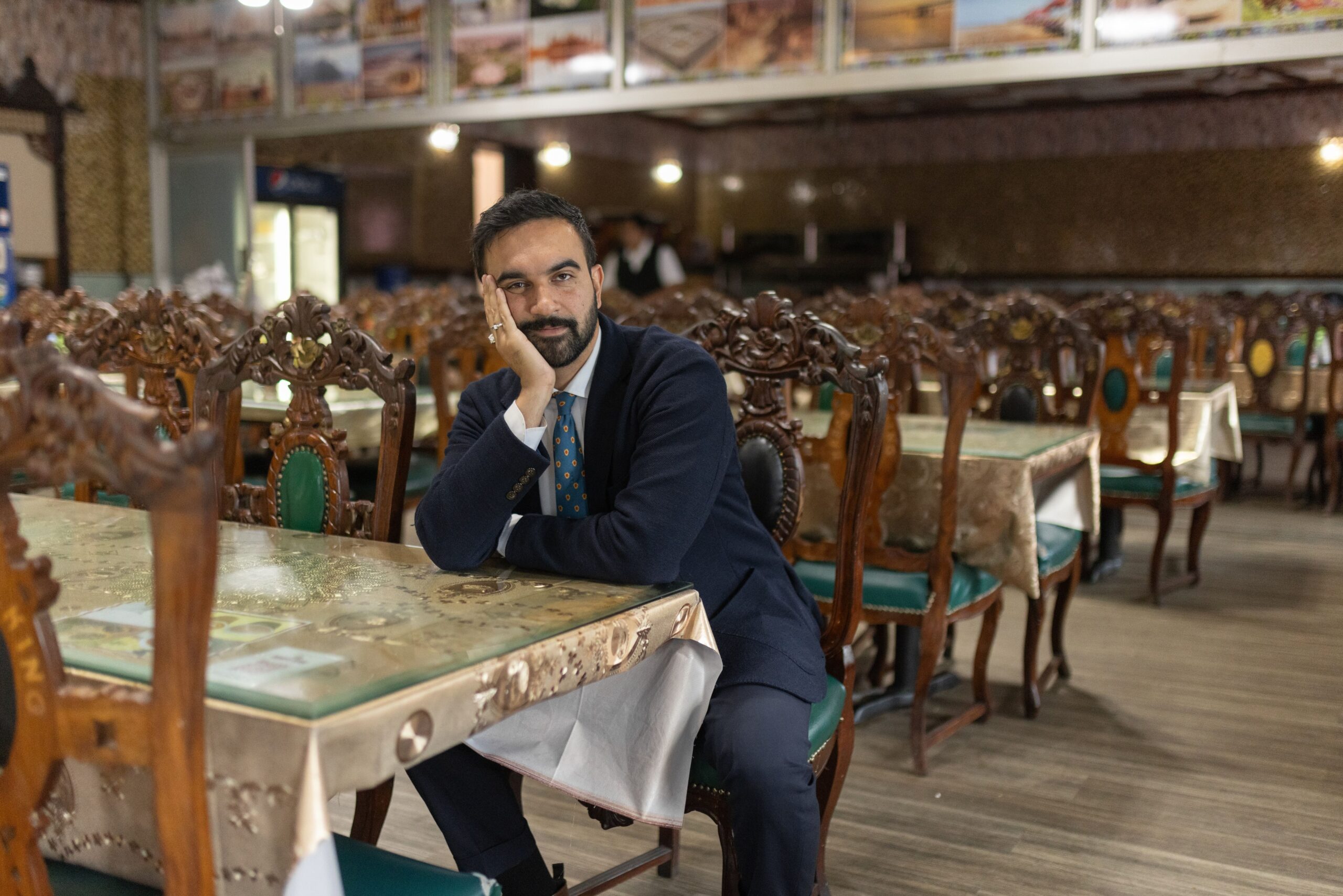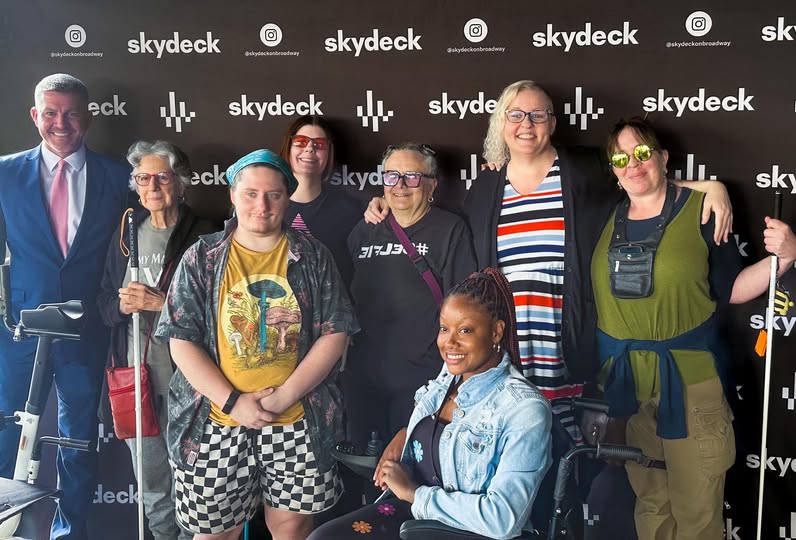
Art work by Martha Valenta | Photo Credits: Laurence Agron for Dreamstime-Andrew Cuomo, JHansen2 for Dreamstime-RFK JR, Sheila Fitzgerald for Dreamstime-Gavin Newsom
New York City isn’t known for wildfires, but when then-Gov. Andrew Cuomo took to the stage on March 29, 2020 — his body framed by as many American flags as televisions — to announce steps being taken to combat the pandemic, that’s the metaphor he chose.
“This virus preys on the vulnerable. It preys on seniors. It preys on people with compromised immune systems and underlying illnesses, and coronavirus in a nursing home can be like fire through dry grass,” he said.
But many believe it was Cuomo who started the conflagration.
New York City, the nation’s most populous metro area, became an early epicenter for the COVID-19 pandemic. At the time, New York City’s COVID-19 mortality rate was 241 deaths per 100,000 people in 2020 compared to 74.4 per 100,000 nationally. Sensational headlines predicted a death toll so grim that local morgues would run out of space, littering the streets of the Big Apple with rotting corpses.
Five days before giving that press conference, on March 25, Cuomo arguably poured gasoline on the fire when he issued an order designed to relieve pressure on hospitals by requiring nursing homes, which are licensed and regulated by the New York State Department of Health, which Cuomo oversaw, to accept COVID-positive patients.
Many in disability-rights and activist communities lay blame for the more than 15,000 deaths that followed directly at Cuomo’s feet.
Subsequent investigations of the Cuomo administration found that nursing-home administrators hid data related to COVID-19 deaths and misrepresented the state’s response. Cuomo’s March 25 directive prompted congressional hearings, a legal inquiry from state Attorney General Letitia James, and several politicians and advocates fighting to acknowledge those deaths.
Pressure mounted and Cuomo resigned from office in 2021 — but for a different scandal altogether. Several women who worked for Cuomo accused the governor of unwanted sexual touching, making inappropriately sexual comments and creating a hostile work environment; another firestorm ensued.
Although he disappeared from public life for a short time — except for a 2024 congressional hearing about his handling of the COVID-19 response, where he was pelted with questions from Democrats and Republicans—Cuomo re-emerged earlier this year to announce his candidacy for New York City mayor.
The announcement aggravated Cuomo detractors, including many advocates in the disability community who, five years later, continue seething about what they describe as Cuomo’s negligence in handling the pandemic and nursing home deaths. Despite the scandals (and what is likely a politically motivated probe from the Trump Administration), early polls have Cuomo in a commanding lead in a crowded field of 11 mayoral contenders.
With less than two weeks before the June 24 Democratic primary and Cuomo leading the pack in both polling and fundraising, disability-rights advocates in New York don’t know if they can stop Cuomo’s election to arguably one of the most powerful offices in America.
But they can do one thing: Make people remember.
‘Really made us angry’
As much of the world descended into lockdown, a group of disabled advocates at New York City’s Coler Rehabilitation and Nursing Care Center decided to document the experience.
Initially formed in 2016, the Reality Poets came together to highlight their shared experiences with gun violence, including the realities of living in long-term care. Leading poetry workshops, presenting in schools and having each other’s backs formed its foundation.
As Coler, which is already relatively isolated on Roosevelt Island, in the middle of the East River, locked down, the Reality Poets recorded life there. That project would coalesce into a documentary film, available on streamlining platforms like Apple TV and Prime Video. Its title, Fire Through Dry Grass, borrows Cuomo’s words from the press conference. They recorded as political and nursing home officials played down the dangers while care staff, including travel nurses, struggled to keep people alive.
The group’s view of the Cuomo administration’s handling of the pandemic is obvious early on in the documentary, when Andres “Jay” Molina, one of the Reality Poets and a key force behind the documentary, speaks directly to the camera.
“Before, I had an idea that this administration don’t know what the fuck they’re doing, at all. But now I definitely know that they don’t know what they fuck they’re doing,” Molina said in the film.
In response, the Reality Poets held vigils, started advocacy campaigns and led protests against conditions at Coler. For the poets, many of whom had previously been incarcerated, the isolation they describe in the documentary felt similar to the incarceration they knew before their time at Coler.
The work of the poets, whose leaders are Black and brown, also cast light on the racial disparities during the pandemic.
According to research published in 2021, nursing homes where the majority of residents came from marginalized communities were disproportionately affected at the beginning of the pandemic. Authors of the report, published by the journal Frontiers, wrote: “…[T]he nursing home industry operate[s] on a two-tier system based on race/ethnicity and socioeconomic status” and recommended policy interventions “to address some of the resource allocation and systemic racial/ethnic inequality issues at the core of these disparities.”
Vincent Pierce, one of the Reality Poets and co-director of its umbrella organization, Open Doors, told DJA that the goal of the documentary and the group’s work since the film debuted is honoring the memory of those lost and fighting for better living conditions for people in nursing homes. This includes a petition campaign called #NursingHomeLivesMatter that would create a bill of rights for people who live and work in nursing homes, a fight that continues today.
“I feel like we was trapped,” Pierce said. “Nowhere to go, so we just had to basically face the bull in its face, you know, and hope we make it.”
While healthcare administrators and news reports highlighted the construction of a new facility at Coler and stressed that nursing homes were safe, the reality was much different. In fact, a state comptroller’s report later concluded New York nursing homes lacked adequate personal-protective equipment, that residents were not separated from the influx of new COVID-positive patients and care standards were unmet. To top it all off, the hospital was not erecting a new building; it was simply reopening an old wing.
For Pierce and his friends, watching Cuomo and other high-ranking officials skew the public narrative and claim that nursing homes were safe was tough to take. Surrounded by COVID-positive patients around the clock, he saw and felt the danger for himself.
“I was just hearing code blues all day until one positive case turned into positive cases on every unit. Instead of them securing the space for the residents that they already had, to separate the positive [cases] from the negatives, they didn’t. They did what the mayors and governors were saying to do, which really made us angry,” Pierce said.
Never so much applesauce
At the same time disabled people in nursing homes were fighting to stay alive, people like current New York City Council Member Shahana Hanif, felt the impacts of Cuomo’s decisions firsthand.
“Living in Brooklyn with an auto-immune disease during this period was terrifying. I was scared about my health and the wellbeing of my community,” Hanif said.
Estimates vary, but most reports state that more than 15,000 nursing home deaths occurred between the start of the pandemic and May 2022. Critics argue that Cuomo’s requirement to move COVID-positive patients into existing nursing homes exacerbated the death toll. At a 2024 congressional hearing, Cuomo stated that he consulted with neither the U.S. Centers for Disease Control and Prevention (CDC) nor Centers for Medicare and Medicaid Services (CMS) before making the decision.
As is common with both disability and COVID-19 statistics, the reported number of COVID-related nursing home deaths is likely low. The figures come further into question considering Cuomo himself admitted to obscuring the data; Cuomo’s aides also rewrote a report to rationalize his decision. Not long after the March 29 press conference, Cuomo was also sued for not providing American Sign Language interpretation.
Hanif, who has lupus, told DJA that it’s important for New Yorkers to remember that time.
“I think that as a city, there’s a natural instinct to quarantine the memory of this time period because it was so traumatic for all of us. But in doing so, we lose a lot: emotionally processing this collective experience, learning from what worked and didn’t on a public policy level and preparing for future pandemics, just to name a few,” Hanif said.
While Hanif was campaigning and organizing at the grassroots level, New York State Assemblywoman Yuh-Line Niou fought against a proposed what she called a fundamentally flawed budget, one that Cuomo touted. That budget, which included a COVID-19 response package that Niou believes, ignored input from community organizations, including the need for more culturally appropriate food during the pandemic., she said.
“People did not consider people with chronic illnesses or people with disabilities. It was bagels and crackers and applesauce and milk and cookies. If you have renal failure, if you have diabetes, if you have other nutritional needs, they were not catering to that…I’ve never seen that much applesauce on the streets of New York,” she said
Niou argues that more funding should have gone to existing community-based organizations instead of new programs that failed to consider the needs of disabled people.
“Instead of trying to recreate the wheel … all they had to do was just expand the programs that already existed. Give people more funding so that they can deliver meals or make more meals, and then the communities that those organizations already served would be served,” she said.
Now, Niou hopes New Yorkers remember Cuomo’s mishandling of COVID-19 for disabled people, although she is not optimistic they will.
“I think that a lot of people don’t know what happened,” she said. “People don’t even realize that he resigned in disgrace. He has 100% name recognition and there hasn’t been an education campaign about what he’s done and the harm he’s caused.”
‘Shameful’
It’s unclear whether the approximately 4.7 million registered New York City voters will keep Cuomo’s nursing home scandal top-of-mind when they go to the polls later this month.
While the rates of disabled people voting have increased markedly since 2018, they lag behind other voters. A 2024 report by researchers at Rutgers University found that a third of the American electorate either have a disability or have a member of their household who has one.
“While disability is subject to varying definitions and methods of measurement, all of the surveys show large numbers of potential voters with disabilities, clearly pointing to the important role that people with disabilities can play in elections,” the report’s authors concluded.
Sarah Blahovec is a Washington, D.C.-based political expert and co-founder, co-director and president of Disability Victory, an advocacy organization that aims to build political power among disabled progressives.
Echoing the Rutgers report, she said that to understand whether a disability-focused issue will affect the polls, you first have to understand the diversity within disability communities and, more specifically, that actively politically engaged disabled people are just a portion of the proverbial pie.
“These are issues that show up a lot and people directly tie it to disability. But we’re one subset of the disability population. There are millions of people with disabilities around the country and they do not view disability in the same way. We’re not a homogenous voting bloc.”
It’s a common refrain in disability communities that the identity is not a monolith, with many who would qualify choosing not to identify as such because of stigma. For example, many senior citizens do not identify as disabled even though the aging process can lead to disabilities as defined by the Americans With Disabilities Act.
At the same time, some disabled people have become disillusioned, in Blahovec’s view, with the mainstream Democratic Party’s handling of COVID-19. For example, current New York Gov. Kathy Hochul proposed a mask ban, which could put people with chronic illnesses at greater risk.
Disability, and the nursing home scandal specifically, have started to filter into media coverage about Cuomo and the New York City mayor’s race. For Hanif, the city council member, Cuomo’s handling of the early days of the pandemic deserves to be front-and-center.
“Gov. Cuomo’s order to require nursing homes to accept patients who were COVID-positive and his subsequent efforts to cover up the consequences of that decision are shameful,” Hanif told DJA.
Representatives from Cuomo’s campaign did not respond to requests from DJA seeking an interview or comment for this story.
Should Cuomo win the June primary, the Reality Poets’ Pierce hopes voters this fall remember the lived experience of those in nursing homes during the early days of the pandemic.
“He’s responsible for death, lots of them,” he said. “That was underreported, very much so underreported. How could you cover up that? How could people forget about that?”
More DJA Coverage
Sae Joon Park is in disbelief. Park, an army veteran who came to the U.S. from South Korea when...
By
November 5, 2025
Kara McCurdy Prior to New York Assemblyman Zohran Mamdani’s win in New York City’s Democratic primary, there were questions...
By
November 3, 2025
Dr. Cynthia George — better known around Nashville’s punk scene as Dr. CynCorrigible — is impossible to miss....
By
November 5, 2025


